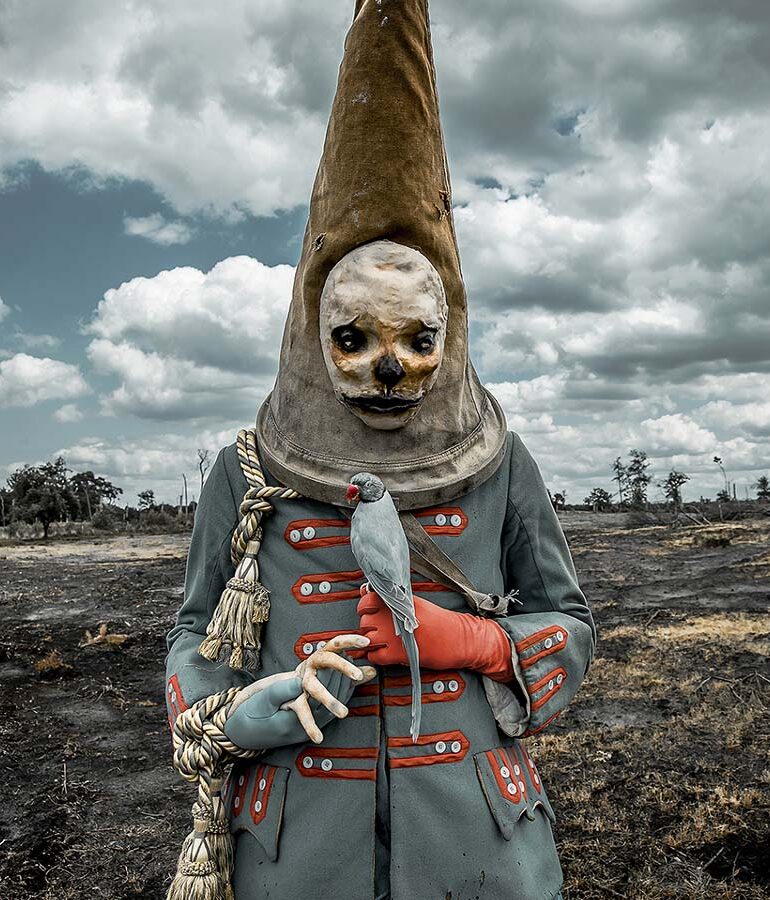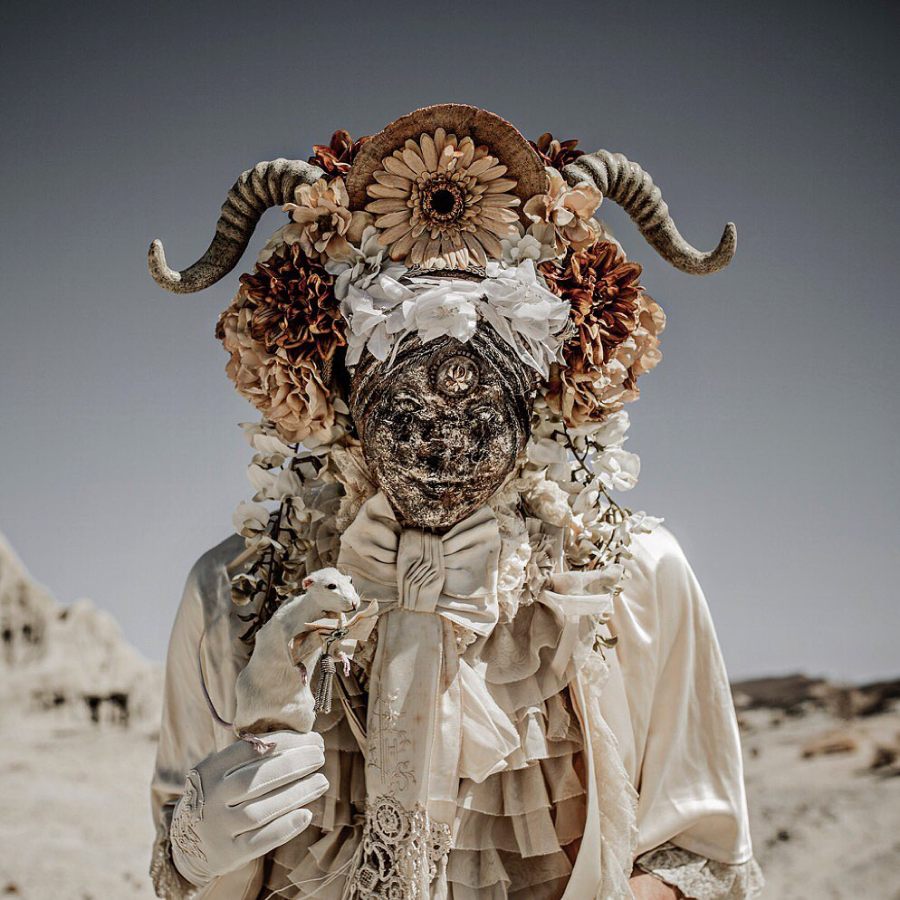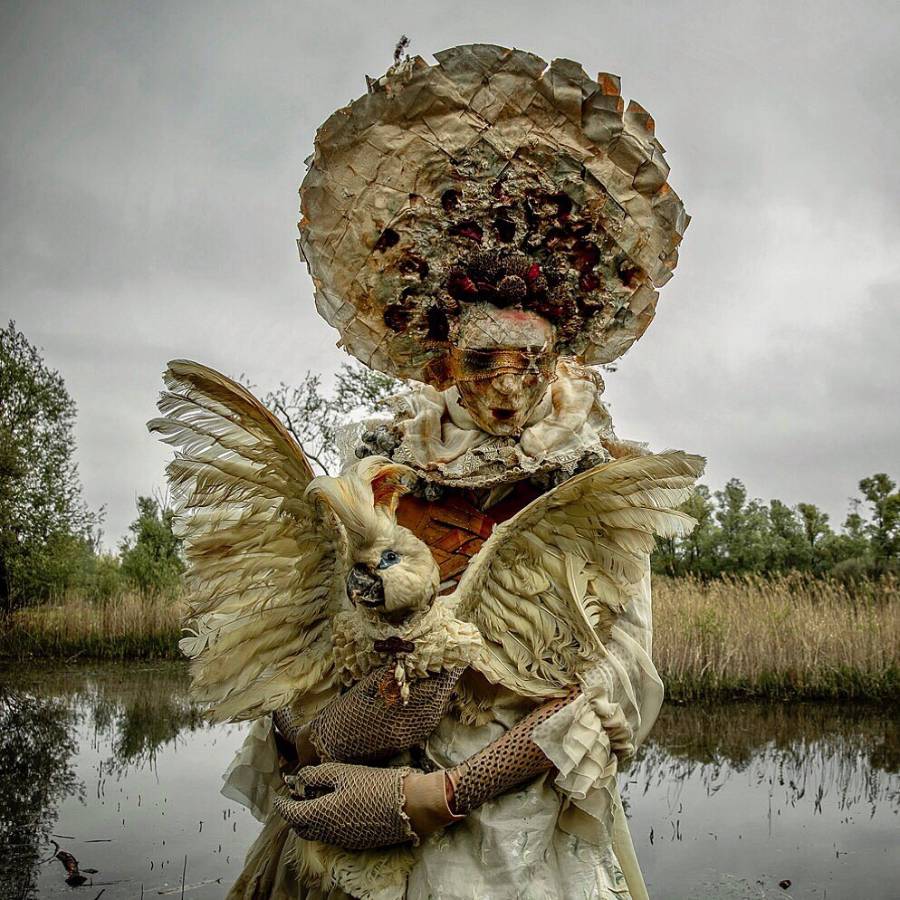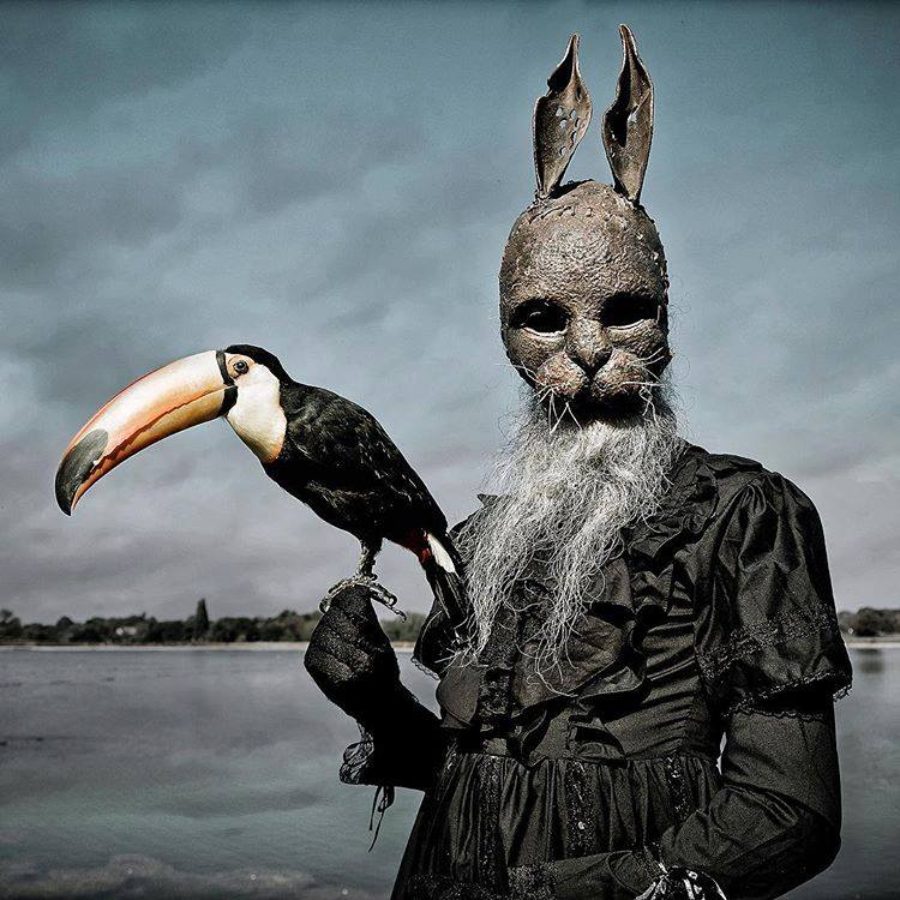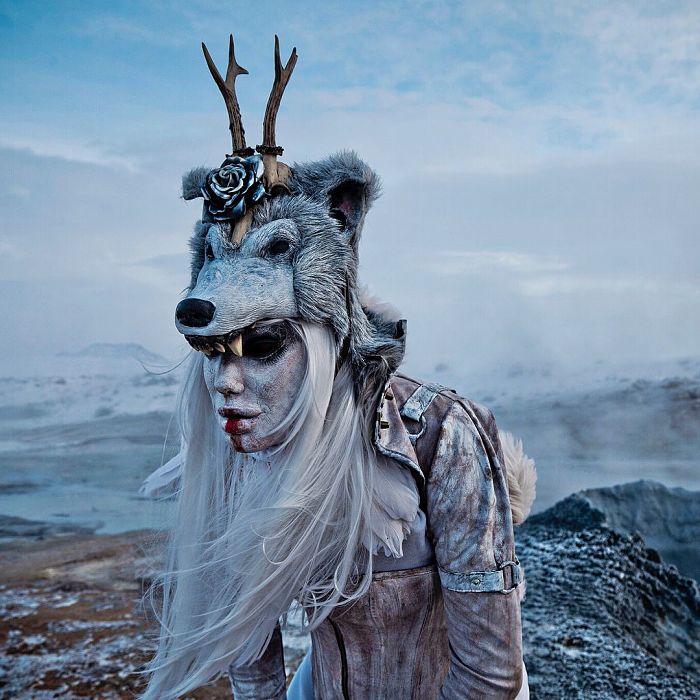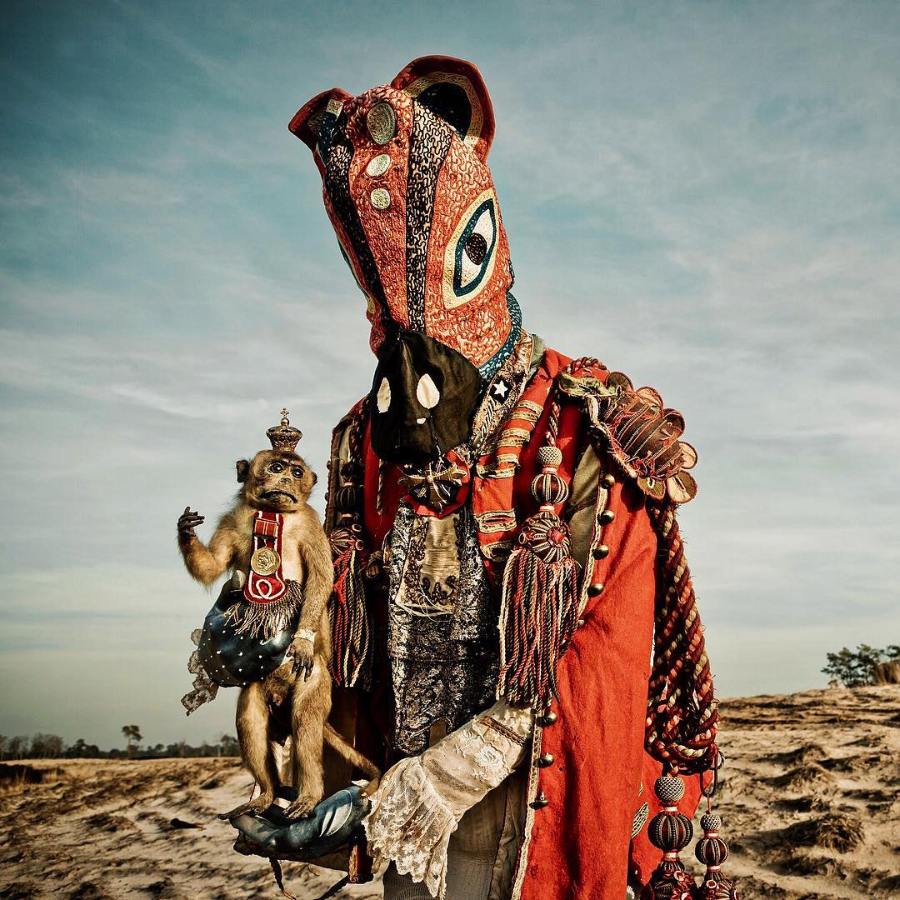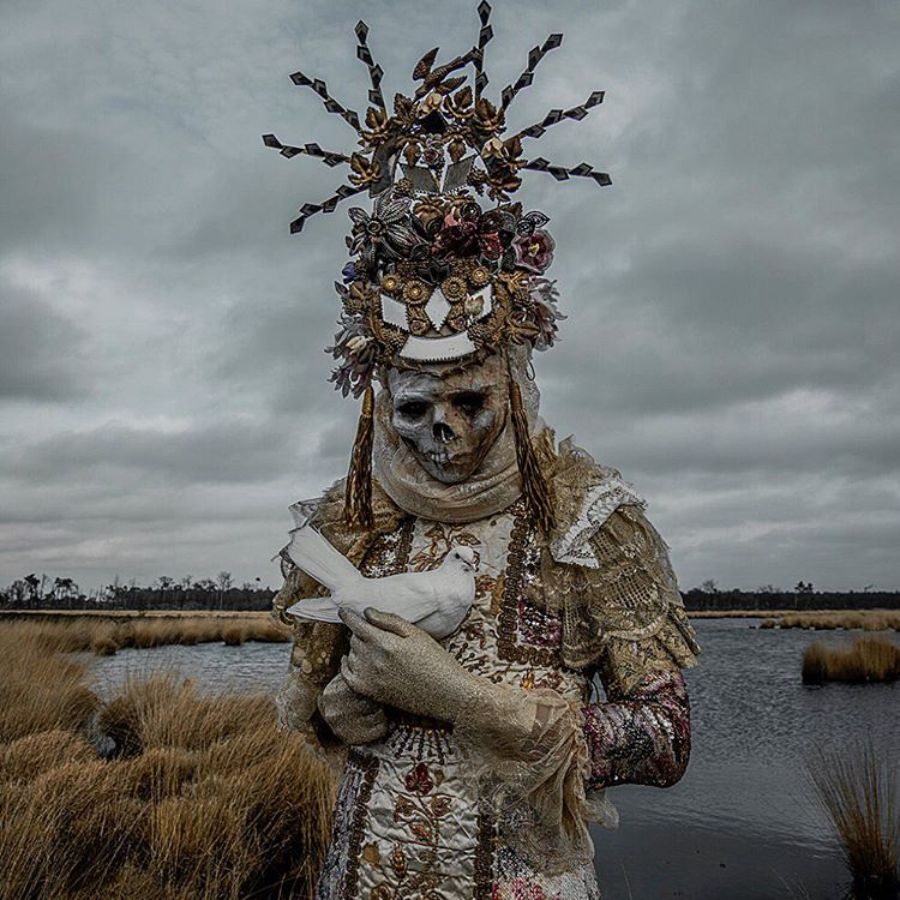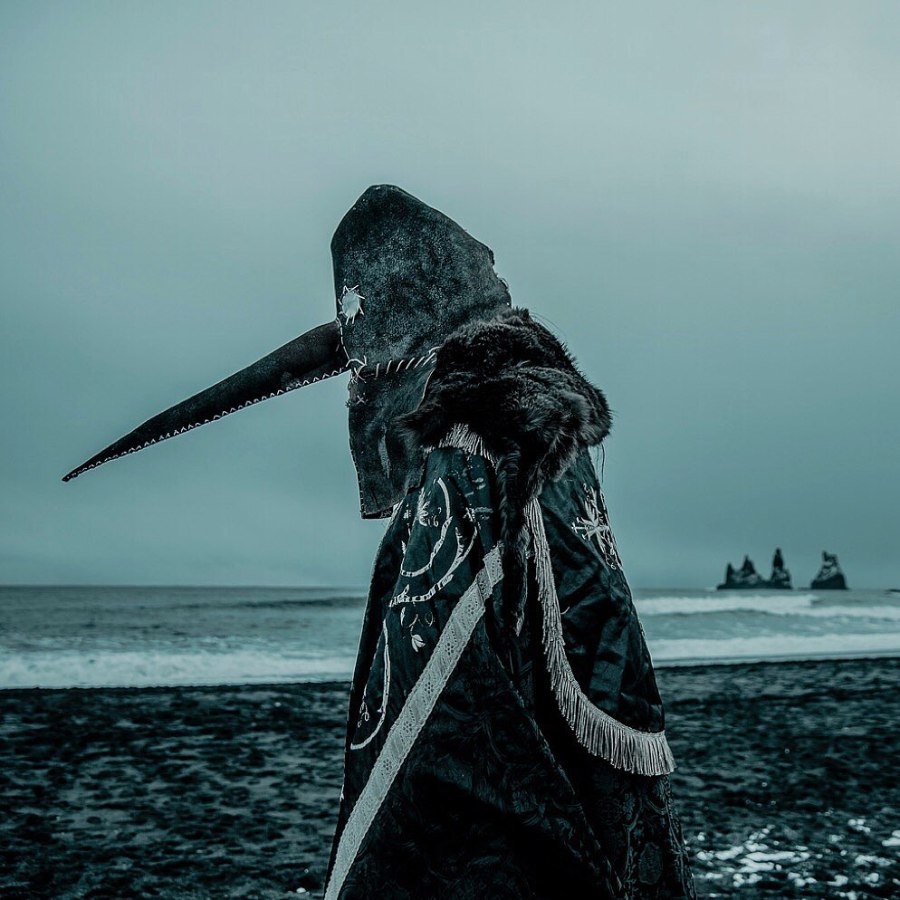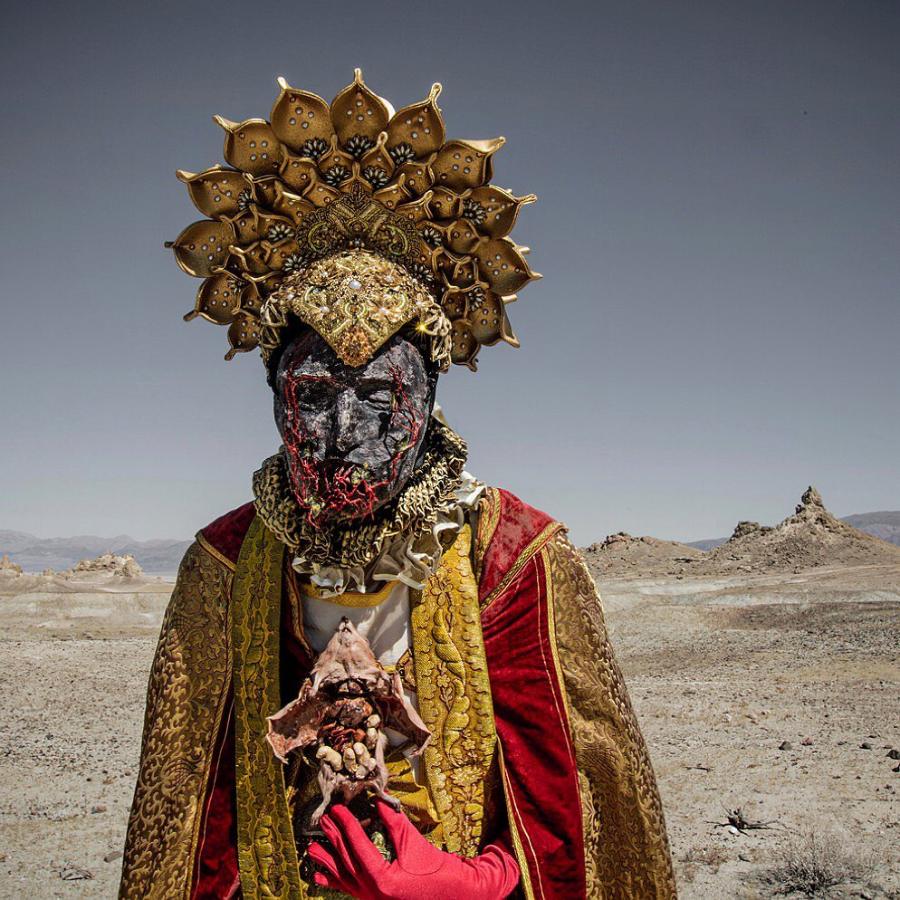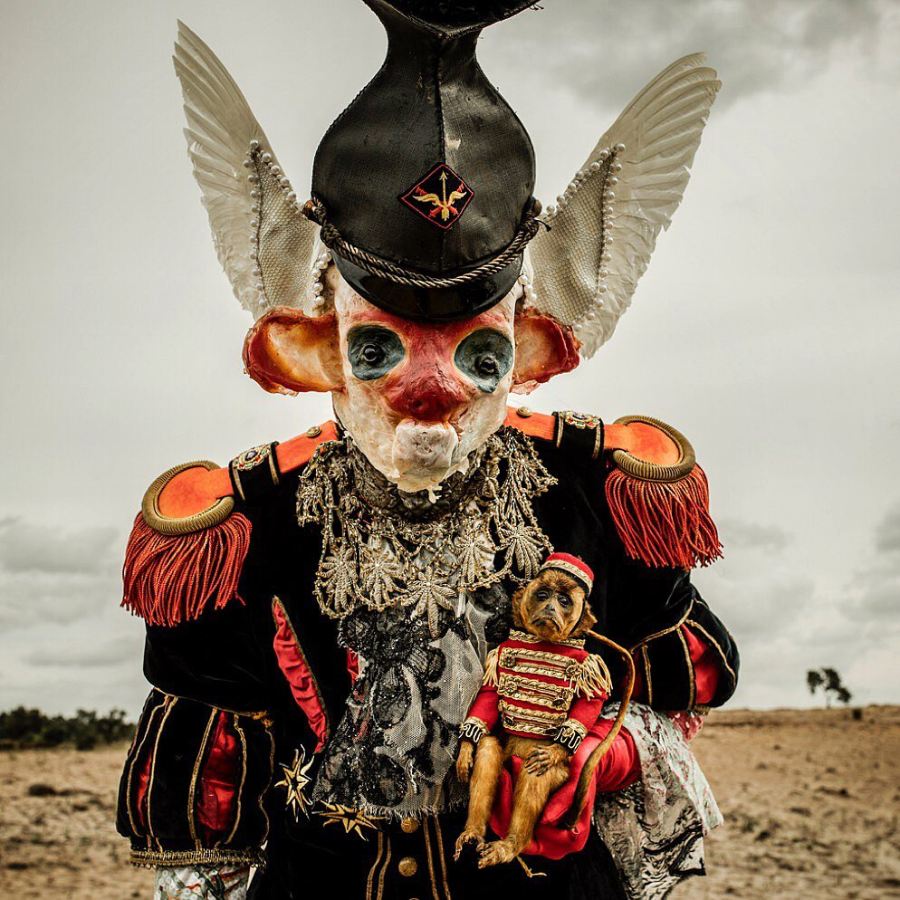Exclusive Interview with Mothmeister, 3rd Prize Winner, iCanvas Photography Award, 2020 Beautiful Bizarre Art Prize
The Belgian artist duo known as Mothmeister shares a common love for post-mortem photography and taxidermy. From this unusual passion, the duo has managed to turn it into a recognizable force and create their own universe. This a mix of nightmares, fairy tales, and often devastated landscapes, even post-apocalyptic in some cases. This world, they named it Wounderland.
These two creative minds are graphic designers and art directors and both come from Belgium, more precisely from Antwerp. And that’s about the only personal information we know about them, as they prefer to highlight their artistic alter-ego. Mothmeister also contains many meanings; it refers just as well to one of my favorite urban legends, the Mothman. It’s a humanoid creature with moth wings that was seen at Point Pleasant in 1960. But Mothmeister also refers to the transformation of something off-putting into something beautiful. That’s clearly visible when you see the associations of stuffed animals and death masks assembled in otherworldly settings.
The imagination to create their photographs comes above all from their passion for taxidermy. Even if they are not themselves, they have been collecting all kinds of stuffed animals for more than 25 years. This base, combined with their own dreams and nightmares and overflowing love for late 19th century post-mortem photography, has almost naturally led them to what makes their style unique today.
Enter the 2021 Beautiful Bizarre Art Prize in any of the four Award categories: RAYMAR Traditional Art Award, INPRNT Photography Award, iCanvas Digital Art Award, Yasha Young Projects Sculpture Award, plus our People’s Choice Award, for your chance to receive global exposure for your work and share in over US$45,000 in cash and prizes!
If you want your work as a storyteller to evoke an emotion, you have to put emotion in your work as well.
Their personal collection is now looking like an old curiosity cabinet from the last century. It is now the basis of their first photo shoots. This collection of stuffed animals and death masks from the four corners of the world allowed them to create their first compositions. Combining this with a passion for urban exploration, Mothmeister manages to create photographs with a unique and recognizable style. They are bewitching, intriguing, and terrifying at the same time. One has the impression of facing paintings featuring characters from the land of dreams. Although there is never any aggressive or violent intent, you are nevertheless disturbed by what you see. You cannot take your eyes off it without being totally fascinated and hypnotized.
We can clearly see the influences Mothmeister may have taken from artists. Walter Potter, the famous 19th century English taxidermist, is one as well as Cindy Sherman’s photographic compositions. One can feel the mixture between diorama and photography that makes all their works breathtaking.
One of the things I love about Mothmeister is that they are not taxidermists themselves. That gives them a lot of scope for collaboration. They are the first to say it, taxidermy is a very precise art. It requires a lot of know-how and knowledge of anatomy. Similarly, they often choose to work with little-known taxidermists, wishing to have imperfectly stuffed animals. This aspect fits perfectly in their artistic line. They are above all there to magnify these small imperfections, to use these dark creations for their compositions which seem at times completely unreal. The artist duo also receives masks and accessories from fans and other artists.
Perhaps the most underestimated part of their work is their choice of setting. For if our eye is first and foremost captivated by the settings, impressive masks, and strange animals, it is the places where the photographs are taken that make all the difference. Traveling to New Zealand, Estonia, or Iceland for their various photo shoots, Mothmeister manages to capture dark atmospheres, instantly imposing a mood in each of their creations. One feels transported to another world, perhaps a true heir to the Grimm Brothers’ tales, less sweetened, a lot stronger.
Interview with Mothmeister by Julien Djoubri
How does an idea start for one of your photographs?
Actually, all our Post-Mortem Fairy Tales… they just happen. We never sketch anything. Or even think about how things should look. Each character is brought to life in a very intuitively way. It’s rather a gut feeling. The thing that sparks our imagination can be pretty much anything: an antique hauntingly clownesque mask that we found at a flea market, a half-decayed Victorian medical corset, a scruffy stuffed monkey, an old grape pickers bag that we turn into a cone headpiece… it all grows spontaneously and associatively as if it was meant to be. Creating our characters feels very natural.
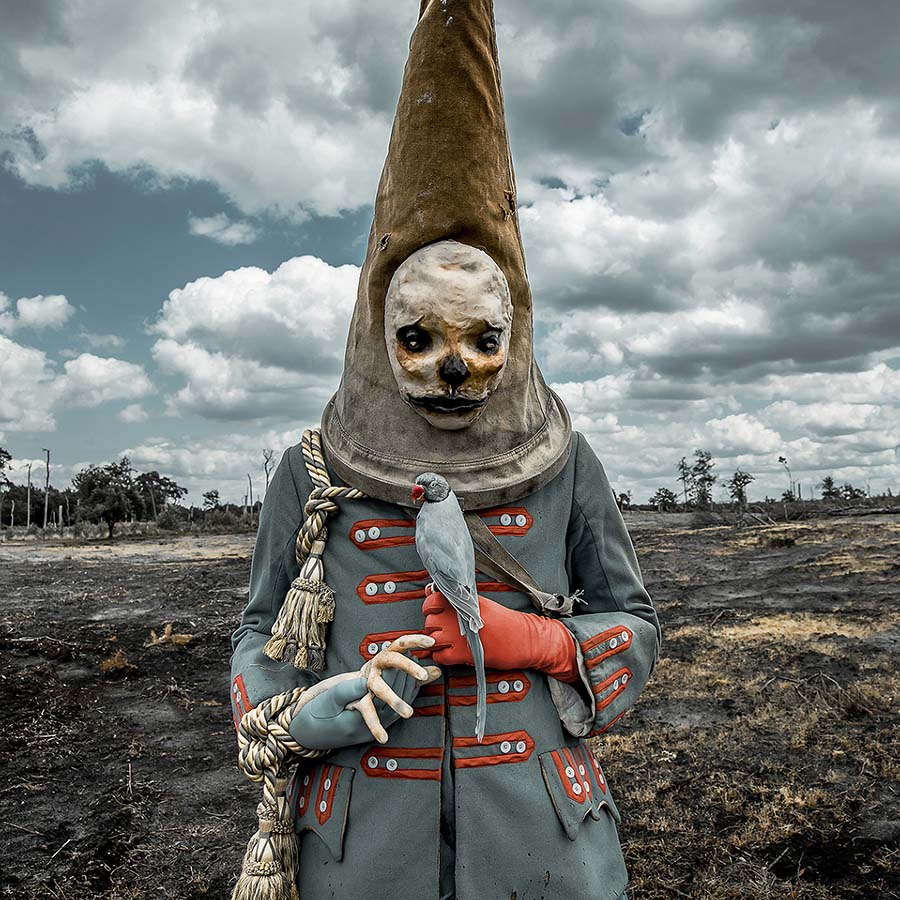
Regarding your different photographs, we can definitely feel a lot of emotion in dark imagery. Can you tell us a bit more about where you find your inspiration?
We dig into our own soul, our fears and childhood nightmares. Or we get inspired and affected by the spirit of the dark places we like to explore. If you want your work as a storyteller to evoke an emotion, you have to put emotion in your work as well. That’s why we always try to create an emotional story between the character and the stuffed animal. We always look for that connection; if not the animal becomes an object. We want our critters to reincarnate so they become alive again and actually play a role. Hence why we dress them up as fairy tale characters. Both characters should feel as if they were part of the same family.
Our characters will never behave in a grotesque way. They might look grotesque but are mostly introvert. They care about the animal. Just like we care about out taxidermy collection. And living animals in general. Most of our characters don’t stare at the camera. They rather tend to look away and be introspective. They don’t seek out special attention. That behaviour enhances their emotion. And is one of the reasons why people say our work is intriguing. Nothing is obvious. You stare at the image and have to make your own story.
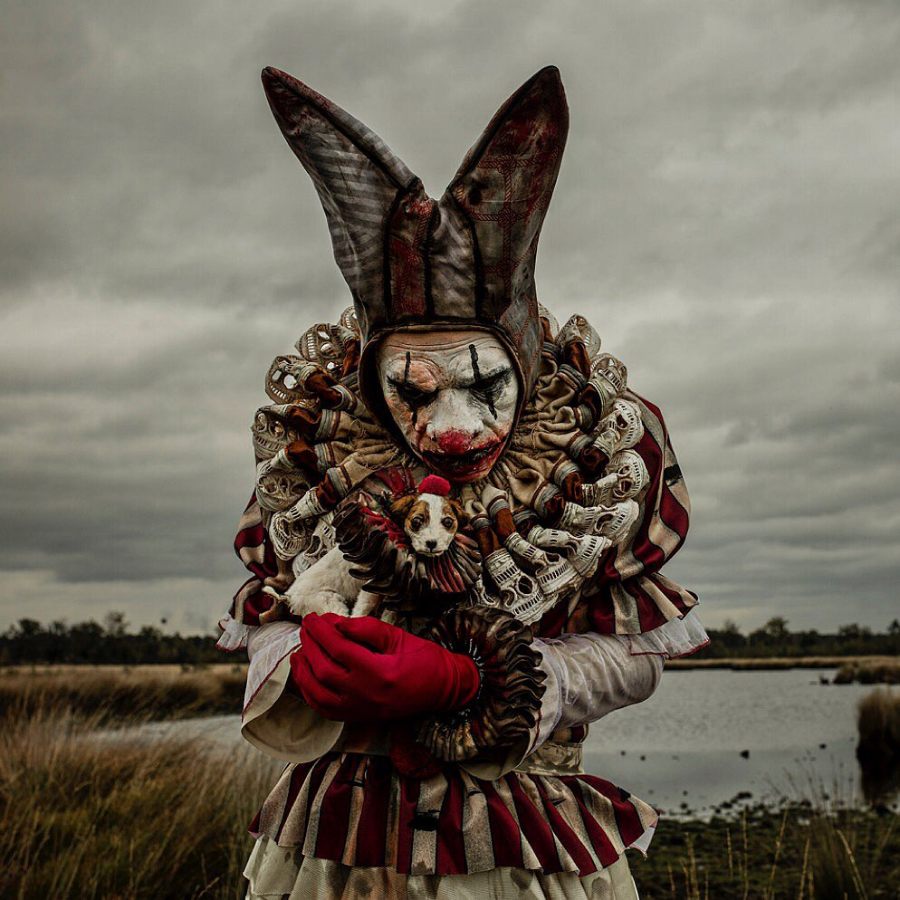
Each post-mortem fairy tale is different as every character is different but they are all part of the same distorted family. Because of this darkness they all flirt with. The macabre that ties everything together. But also the bleak and desolate locations and the weather play an important, narrative role.
For me, photography is a visual language. What are you hoping to communicate to the viewer through your work?
We dislike art that comes with a manual. Or with an explanation. None of our images have a title. It’s open to interpretation. We just throw things out there. A lot of people absolutely love it. A lot of people hate it. Both are fine. The worst thing that can happen is that our art leaves people feeling completely numb.
Looking at your work, everything seems to be part of the same dark narrative universe. Is that intended?
The dark narrative universe we’ve created grew organically out of our unconsciousness. We grew up with the Grimm fairy tales, which were originally really dark and unsettling, so it must have influenced us from early on. We’ve never been keen on ‘the shiny happy sunshine culture’. Each post-mortem fairy tale is different as every character is different but they are all part of the same distorted family. Because of this darkness they all flirt with. The macabre that ties everything together. But also the bleak and desolate locations and the weather play an important, narrative role. Most of the time we wait to shoot until there’s some kind of tension in the air. Mothmeister is not a sunshine universe. We love the threatening drama of dark stormy clouds.
These isolated and often eerie settings not only trigger our wanderlust and adrenaline but they also inspire.
How do you choose a location for your shoots? Does each location add to the meaning of each photograph?
Even though our locations are mostly bleak and have a flat horizon, we consider the location as a character. So it does play an important role in our shoots. Its atmosphere enhances or influences the mood or emotion of the main character. Even one simple dead fallen rotten tree can make the difference, or one simple crack in the desert.
We have a weak spot for abandoned settings and places that have gone through rough waters. There’s so much soul and storytelling in itself that it will reflect our characters. And will make the image much more intense at the end. These isolated and often eerie settings not only trigger our wanderlust and adrenaline but they also inspire. Even though these soils are often barren, bone dry or even toxic it’s very fertile ground for our imagination. This is where our characters grow.
Sometimes it takes weeks to find that one spot we are looking for. And hours to get there but at the end it always pays off. Cause it all just feels right. When we travel we are always happy campers when no one is around. Hence why Mars is on top of our bucket list. That said, Mothmeister will always bring animals back to nature; we will never shoot in urban settings.
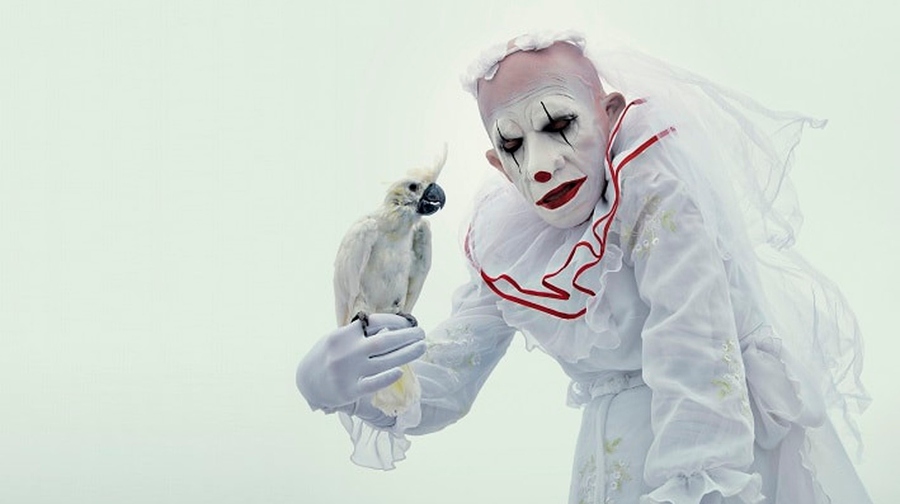
How is it to work as a duo?
Being an artistic couple feels very comfortable. It feels like we are a conjoined twin and share the same grey matter and ideas. Our personalities are complementary. It’s chemistry at its best.
Also from a practical point of view being a duo comes in handy. One of us models. And the other one takes the pictures so we can swap roles anytime. Mothmeister is a very flexible alter ego. We graduated at the same Art School and have always been together ever since. Being graphic designer and art director definitely helps visualizing our universe.
Your photographs combine a lot of different influences: urban exploration, post mortem photography, taxidermy, masks… can you tell us more about your creative process to mix all your influences?
Mixing all these influences isn’t that bizarre. It all grows and blends together naturally. Urban exploring is about dead places. Post-Mortem photography is. And taxidermy is about dead animals. So there’s something these elements have in common. Once the character is born, we look for the best matching setting. We do collaborate with a lot of artists from all over the world as it’s very inspiring for us… but also for them. By sharing our universe through our Instagram feed, there are a lot of people that get to know these artists as well. That’s our way of supporting them. It’s a win win for sure.
Because we combine different art disciplines in one single image we can collaborate with taxidermists, mask designers, fashion designers, prop artists, etc. These collabs enhance the authenticity of each post-mortem fairy tale. Instead of shopping our stuff, we work together with artists that create one-of-a-kind pieces.
We definitely have a weak spot in our heart for Iceland. Even though it can be a real bitch, we can’t resist going back time after time. We love the remoteness, the unforgiving wild nature, the magical otherworldly landscapes, the volatile volcanoes, the vast glaciers, the brutal weather and the dangers that come with it. Each time it’s a challenge to survive.
Are there any artists (or people in general) that have inspired you creatively?
Dozens. Apart from the many artists we collaborate with, Edward Kienholz with his installations and assemblages definitely influenced our art. He ignited our hoarder’s lust and is the cause of the cabinet de curiosité where we live. It’s eclectic. We also assemble junk, antique treasures that don’t belong together at all. On top of that we do have a hundred stuffed animals, costumes and masks… it’s very inspiring to live in this Kienholz-world. It became a way of life. The artists we collaborate with also influence not only the look but also the way the character behaves. So we feel honoured and humbled to be able to collaborate with so many people out there.
I read that you used to travel all across the globe to find the ideal spot for your art. What was your favorite place to create a photoshoot? What is your favorite creation so far?
That’s a tough one. We’ve travelled to many unique places, but we definitely have a weak spot in our heart for Iceland. Even though it can be a real bitch, we can’t resist going back time after time. We love the remoteness, the unforgiving wild nature, the magical otherworldly landscapes, the volatile volcanoes, the vast glaciers, the brutal weather and the dangers that come with it. Each time it’s a challenge to survive. During a violent winter storm we were almost dragged into the ice cold ocean by a killer wave, we faced terrifying whiteouts and nasty snowstorms with hurricane force winds that almost got us killed. But we love these kind of extremes, it makes you feel alive. One of our favourite creations was at the boiling sulfur pots of Namaskard. It was a windy freezing minus 12° Celsius and we were shooting in the middle of the volcano steams, Which was a bit warmer, but it smelled like hell had opened its doors, and once we came out of the warm steam the vapor froze to our skin. We felt like a mummified rotten egg.
Why did you enter the Beautiful Bizarre Magazine Art Prize?
It just felt like the right thing to do and the right platform to be showcased. As we said earlier, we’ve always been fan of BBM as an inspiring platform. We came across very interesting and intriguing work through BBM. Last year we entered for the first time and were nominated as one of the 25 finalists. But didn’t make it to the top three. This year we did. It’s simply mind-blowing.
What does the Beautiful Bizarre Art Prize mean to you?
We are beyond honoured and excited to have won the 3rd prize. From day one we thought BBM was – and still is – such an high-level inspiring platform showcasing so many artists from all over the world and with all kinds of disciplines. Having won the third prize is a huge compliment. And will boost us even more. Our work will be shown at Modern Eden Gallery in San Francisco. As the biggest part of our fanbase is based in the States that’s spot on.
Finally, can you tell us if you have any plans or artistic projects in the future?
We are currently working on our second book entitled ‘Dark & Dystopian Post-Mortem Fairy Tales’, which – as the title suggests – will be darker, more intense and more exclusive than our first book. Having our first book being released and two runs being sold out we were over the moon. The fact that our publisher Lannoo wants to release a second book is simply mind-blowing. This means the world to us so we want to nail this second one. But as we do everything ourselves from photography and writing to art direction it takes about one year to finish.
It’s scheduled to be released March 2021. Once it’s out there we want to start touring again. We have plans to run some immersive exhibitions in Brussels, LA, Portland, London, and again in probably Berlin. Other than that we are working on a couple of music videos for bands. And of course will be collaborating more with artists all over the world as it’s very inspiring. It just feels as if Mothmeister just started. It’s such a very exciting period. In the meanwhile, our hoarding talent hasn’t stopped neither so there’s definitely more to come.
